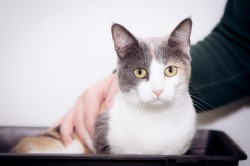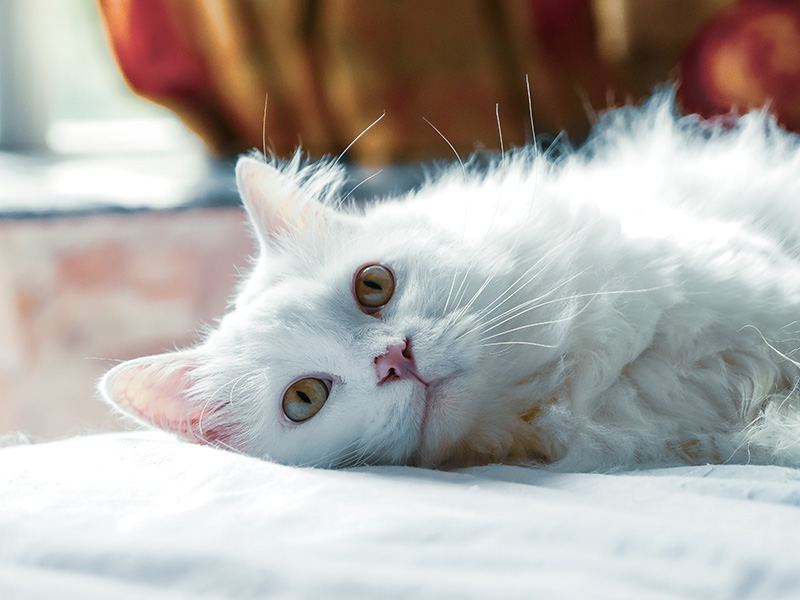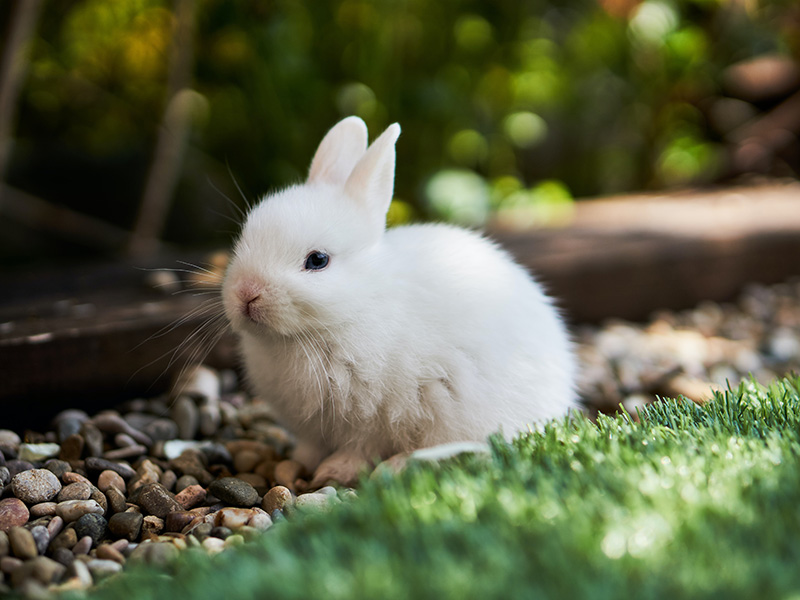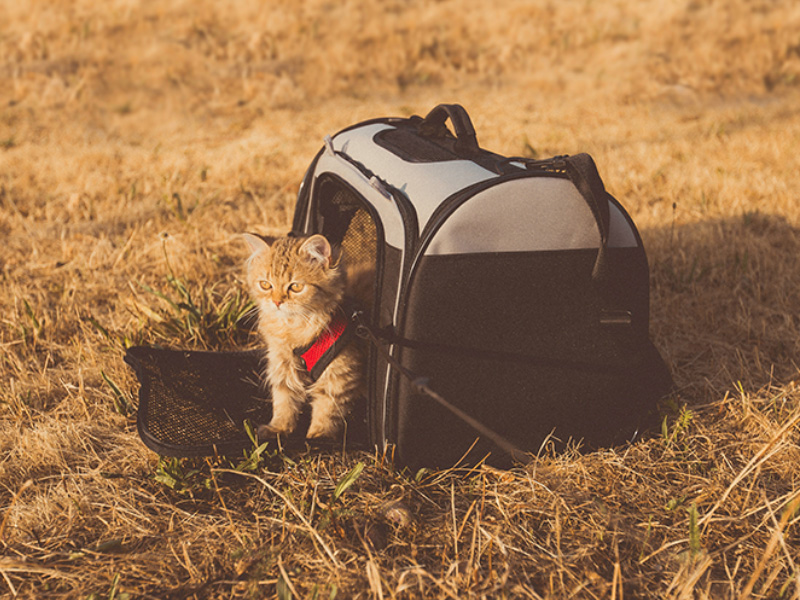Dental Disease In Cats And Dogs
 Dental disease is common in cat and dogs – it is estimated that 4 out of 5 pets over the age of 3 years have evidence of gum disease. Daily dental care at home with regular check-ups and professional treatment as needed is just as important for our pets as it is for us.
Dental disease is common in cat and dogs – it is estimated that 4 out of 5 pets over the age of 3 years have evidence of gum disease. Daily dental care at home with regular check-ups and professional treatment as needed is just as important for our pets as it is for us.
Acorn House Veterinary Hospital offers outstanding dental care.
The dental service at Acorn House is led by RCVS Advanced Veterinary Practitioner Ruth Halpin and is well equipped with a purpose-built dental suite with wall-mounted dental Xray.
Exceptional hospital and anaesthetic care are included as standard with separate cat and dog wards, 24 hour nursing care, anaesthetic blood test, blood pressure monitoring and intraoperative fluids for every dental case.
The practice provides a dental assessment at the time of every booster vaccination / annual health check and recommends home tooth brushing - watch our video
How does dental disease develop?
Because animals do not brush their teeth or floss between teeth, food accumulates on the teeth. Bacteria grow on these fragments of food. Over time, the bacteria move into the gums and cause damage that results in discomfort, tooth loosening and infection that can spread to other parts of the body.
Risk factors
Older animals are more likely to suffer from dental disease but animals of any age can be affected. It is estimated that 80% of adult cats, dogs and humans have some degree of gum disease!
Wet food may promote dental disease more rapidly than dry food.
Animals that receive regular home tooth brushing are at lower risk for dental disease than those that do not.
Complications
The direct problems caused by dental disease are
- Bad breath
- Poor grooming
- Excessive salivation
- Behaviour changes – e.g. uncharacteristic irritability, depression, aggression, appetite changes – as result of dental pain
- Tooth loss
As in people, periodontal disease may contribute to or increase the risk of other diseases such as diabetes and infection of the heart, lungs, liver or kidneys.
Diagnosis
Dental disease is diagnosed by a veterinary professional examining the mouth. To safely and thoroughly evaluate the teeth on all surfaces and below the gum line, our patients need to be anaesthetised, and dental x-rays are often required. However, it is possible to make a general assessment of dental health during a routine, conscious examination (e.g. at vaccination or consultation). At Acorn House Veterinary Surgery our vets use a scoring system to estimate the
extent of dental disease. If there are significant signs of dental disease we will recommend that your pet is booked in for dental assessment and treatment under a general anaesthetic.
| Grade | Description | Recommendation |
|---|---|---|
| Grade 0 | No plaque or gingivitis present. | Preventative brushing.(see video below) If not possible dental diets and chews |
| Grade 1 | Mild plaque and gingivitis. | Preventative brushing. If not possible use dental diets and chews. |
| Grade 2 | Mild to moderate tartar and gingivitis on multiple teeth. | Dental evaluation and treatment under anaesthetic in the next 3 months Then preventative dental care as above |
| Grade 3 | Heavy tartar and periodontal disease with bone loss/wobbly teeth. | Dental evaluation and treatment under anaesthetic in the next month Then preventative dental care as above |
| Grade 4 | Severe tartar, periodontal disease, wobbly teeth | Dental evaluation and treatment under anaesthetic in the next month Then preventative dental care as above |
| Fracture (F) | Recommend anaesthetic in the next month to assess fracture and extract tooth if necessary | |
| Resorptive lesion (R) | Recommend anaesthetic in the next month with evaluation and extraction of resorptive teeth |
What are the options for dental care at home?
There are several different ways of looking after your pet’s teeth. Different methods will suit different pets and their owners. The veterinary surgeons and nurses at the practice will be happy to advise you if you require further information.
1. Tooth brushing
Daily tooth brushing is the best method for protecting your pet’s teeth. We recommend that you use a soft toothbrush designed for cats or dogs. You can choose between a traditional long-handled toothbrush or a rubber brush that is worn over your finger. Make sure that you use a special pet toothpaste as the fluoride in human toothpaste can be toxic to pets and most don’t like the flavour or foaming sensation. Veterinary toothpastes come in fish and poultry flavours and are safe to be swallowed. Some also contain enzymes that help to break down plaque.
Technique
Start off by introducing your pet to toothpaste by applying some to your finger or a toy. Let them lick the toothpaste and give them lots of praise and fuss. Repeat this every day for three to five days.
The next step is to place your finger with the toothpaste on it into your pet’s mouth and gently massage the teeth and gums. This will get your pet used to the toothpaste and the sensation of having their mouth handled.
Once your pet is comfortable with these sessions introduce the toothbrush. Begin with just a few teeth and gradually build up the number of teeth brushed. You need to lift up your pet’s lips so that you can brush the outside surface of each tooth. However, you do NOT need to open your pet’s mouth and brush the inside of the teeth – most pets will not tolerate this, and it is rarely necessary since the tongue tends to keep the inside of the teeth fairly clean. The small teeth across the front of your pet’s mouth may also be ignored unless your pet is particularly cooperative – most dogs take exception to brushing of these teeth and it is better to brush the more important teeth at the sides of the mouth well, than annoy your dog trying to do the front teeth as well and do a less good job overall.
Please ask a member of staff if you would like a demonstration of pet tooth brushing. Contact the surgery if you experience any problems whilst following the above instructions.
Make sure that you give your pet lots of praise after each tooth brushing session, and try to do it every day!
2. Oral hygiene gel
If you find it impossible to brush your pet’s teeth as described above, there is some benefit to using a mouth gel such as “Logic”. This gel can be squirted into the mouth of your pet, or placed on a cat’s paw to be licked off. The gel sticks to the teeth and gums and helps to break down plaque and control the levels of bacteria in the mouth. However, tooth brushing gives much better results as the physical action of brushing physically removes plaque and food particles.
3. Dental chews and treats
If your pet will not allow tooth brushing there is some benefit to using specially designed dental chews and treats. These are designed to gently scrub the outside of the pet’s teeth as they chew.
Ask the nurses or reception for details of the chews and food available – some examples include Pedigree Dentaflex (a very chewy treat to be given twice weekly) and Whiskas dental bites for cats. Small spaces and gaps between teeth will not be targeted by chews and treats so these products will never be as good as tooth brushing but they are better than nothing!
4. Dental diets
Prescription diets are available that will help to slow down the build-up of tartar on your pet’s teeth. These may work by mechanically rubbing against the tooth surface to work away the plaque, or by containing ingredients which slow down tartar build up and inhibit bacteria in the mouth. These diets are dry foods (for example Hills T/D) and can be ordered via reception.
What happens if my pet attends the surgery for a dental assessment and treatment under anaesthetic?
- You and your pet will have an admission appointment with the nurse to check your details and check that your pet is fit and well
- Your pet will be taken through to the ward to be weighed and given a pre-anaesthetic check by the veterinary surgeon on duty. A few drops of blood are tested at this point. This tests kidney function, and some other basic tests of hydration, oxygenation and circulation. This makes sure that we know that your pet is fit and well before any medication or anaesthesia is given.
- Your pet will be given a pre-medication injection. This is a combination of medications to make your pet sleepy and comfortable.
- Your pet will rest in his kennel for the pre-medication to take effect.
- An intravenous cannula will then be taped into a front leg. An anaesthetic injection is given gradually through the cannula until your pet falls asleep. The cannula remains in place throughout the anaesthetic and recovery providing immediate access to the circulation so that fluids and medications can be given as needed.
- A tube is then placed into the airway. This is connected to our anaesthetic machine so that your pet is breathing a combination of oxygen and anaesthetic gas to keep them asleep during the procedure.
- Your pet is monitored continuously throughout the procedure and adjustments made to the depth of anaesthesia, pain relief, blood pressure, and fluid balance as necessary.
- Your pet will be moved into the dental suite.
- Each tooth is examined on all surfaces and a periodontal probe is used to check for pockets and inflammation
- Dental x-rays are taken to examine the tooth roots and surrounding bone as required
- The tartar and plaque are scaled away from the tooth surfaces, paying particular attention to the areas between the teeth and under the gum – areas that are very difficult to reach with tooth-brushing.
- Teeth that are irreversibly damaged will be extracted. For small teeth with single roots this may be quite a simple process. For larger teeth with multiple roots or very long roots it will be necessary to divide the teeth into sections before extraction, or even to perform a surgical extraction where a flap of gum and bone is lifted to expose the root and then stitched back into place. Dental x-rays are used to examine the roots before beginning the extractions and at the end to ensure that there are no fragments of root left behind.
- The clean teeth are polished and rinsed.
- Your pet will remain under one-to-one monitoring until he is awake but sleepy. He will then be returned to his kennel bed and monitored by the ward nurse.
- Pets are rechecked by the veterinary surgeon later in the day to confirm the medication, discharge time and aftercare appointment for your pet.
- Home time! The vet or nurse will give you aftercare instructions and arrange any follow-up appointments that are needed.
- We usually re see patients 5 days after their dental procedure to check the mouth and advise you on preventative dental care so that you can keep the teeth and gums clean and healthy.


























